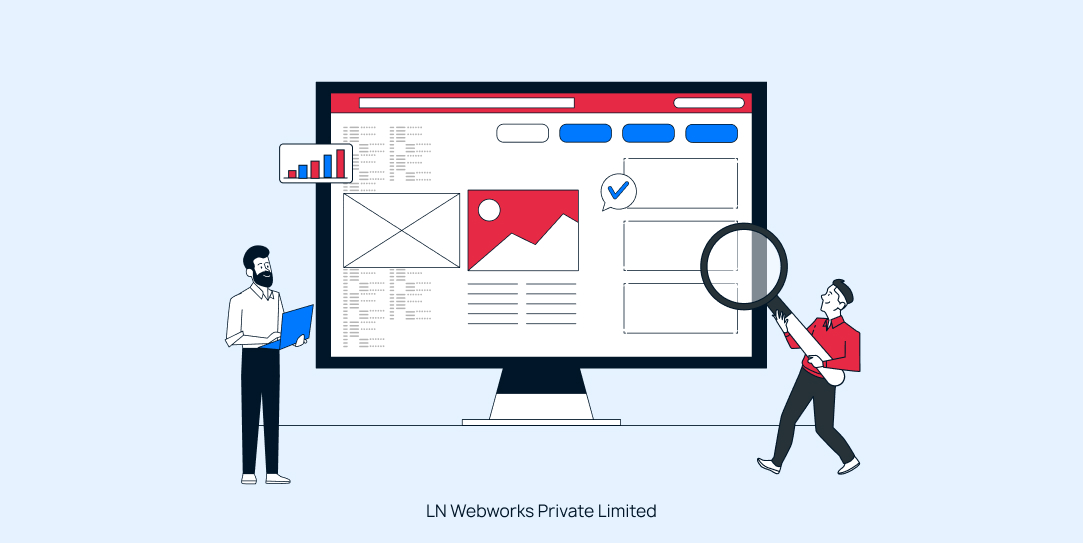Why Is A UX Audit Essential For Organizational Growth?

Back in 2016, Instagram changed how it looked, and it turned out to be a big surprise. They added new stuff and made it easier to use on phones, which made lots more people start using it. They made something called “Stories,” which was like something already on Snapchat.
When big changes like this happen, it’s usually a good idea to check if people like it or not. And this is simply known as a UX Audit. Let’s understand the importance of UX audits and how they can boost and drive value for an enterprise.
What are UX audits, and Why Are They Necessary?
A UX audit is similar to taking a close, fact-based look at a website or app. It assists businesses in identifying their strengths and areas for improvement. They may ensure that the website or app meets users’ expectations and wants by doing this.
There are many reports which show that improving a UX design can lead to great business outcomes. According to Forrester Research, implementing a carefully crafted, seamless user experience design has the potential to increase conversion rates by up to 400%.
The following are some major justifications for why a UX audit is essential:
- It first assists individuals in finding tasks that may be challenging for others to complete, such as locating desired purchases on Amazon.
- Then, when users of the website or app, it assists them in making people happier. Simple features like readable text and intuitive buttons have a significant impact.
- It can also assist in preventing folks from becoming overly irritated. For instance, users may quit a website if it takes too long to load.
- Making it simple for folks to navigate around is another issue. People may stop visiting a confusing website if they are unable to find what they’re looking for.
- It’s also critical to ensure that the website or app is usable by everyone. It’s unfair if certain people are unable to use it. Furthermore, it could potentially get the business in hot water.
- Finally, facilitating ease of use and enjoyment for people can help a business outperform its rivals. Consider Netflix as an example. Users adore it since it’s simple to find content to watch, which encourages them to utilize it more often.
How To Perform a UX Audit Like a Pro?
To perform a thorough UX Audit, just follow these simple steps:
Step 1: Know What the Business Wants
First, figure out what the company wants to achieve with its product. This could be things like selling more stuff, getting more people to know about the brand, or keeping users interested. This helps focus the audit on areas that matter most for these goals.
Step 2: Understand How Users Behave
Next, take a close look at how people actually use the product. See what they’re trying to do and how they’re doing it. There are tools that can help with this, like ones that show where people click the most on a webpage or even record their sessions to see exactly what they’re doing.
Step 3: Check If It’s User-Friendly
Now, evaluate the product based on some standard design rules, like those from Nielsen. This step helps see if the product works well for users and meets their needs.
Step 4: Put Together Your Results and Write a Report
Once you’ve finished looking at everything, gather all your findings into a report. This report lists the problems you found, sorts them by how serious they are, and gives suggestions on how to fix them. It also points out any issues with accessibility and suggests ways to make things better for everyone.
Three Big Challenges of UX Audits You Must Know
Here are some common challenges organizations face when doing a UX audit, along with ways to tackle them:
Figuring Out What to Focus On
Selecting which aspects of the project to examine is a major task. A UX audit includes a wide range of topics, including functionality, usability, and aesthetics. It can be overwhelming to try to look at everything, though. There could be too many issues that arise that are unfixable.
It’s critical to understand the purpose, goals, and necessary actions of the audit in order to prevent this. Consult with all relevant parties, establish reasonable objectives and timelines, and prioritize addressing the most critical issues first. If you work on a shopping website, for instance, you might want to focus on making it simpler for users to make purchases.
Dealing with Resistance to Change
Sometimes, the changes suggested by a UX audit can be hard for people to accept. It might mean spending a lot of time, money, or effort. Some people might not like the idea because they’re worried about it not working, they don’t trust the suggestions, or they don’t understand them.
To deal with this, involve different departments in the audit process to get different opinions and expertise. Also, provide training and workshops to help everyone understand why UX is important and how to make things better.
Working Around Restricted Access
Sometimes constraints make it difficult to visit every section of a website or app when doing a UX audit. Things may become sluggish and frustrating as a result.
Handle this by approaching the audit as a sequential procedure. Take your time and approach the situation piecemeal. This allows you more time to overcome any limitations and figure out how to get around them.
Let’s Wrap It Up!
A user experience audit is like a checkup for your app or website, pointing out areas that need work and guaranteeing a positive user experience. You can increase user satisfaction, increase conversions, and lead your company toward long-term success by putting user experience first.
Do you want to have a UX audit completed for your company? LN Webworks is the right place to look! To optimize your website or app, our team of UX professionals can carry out a thorough assessment and offer helpful suggestions. Contact us right now!
